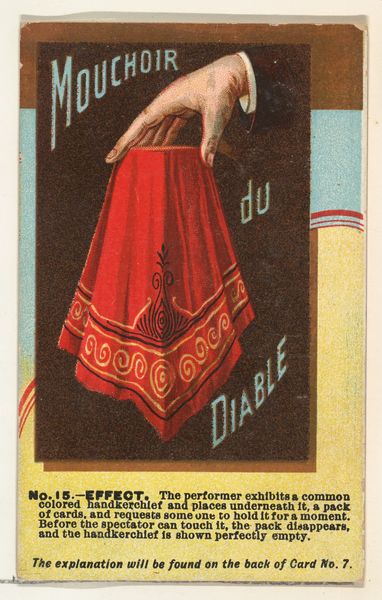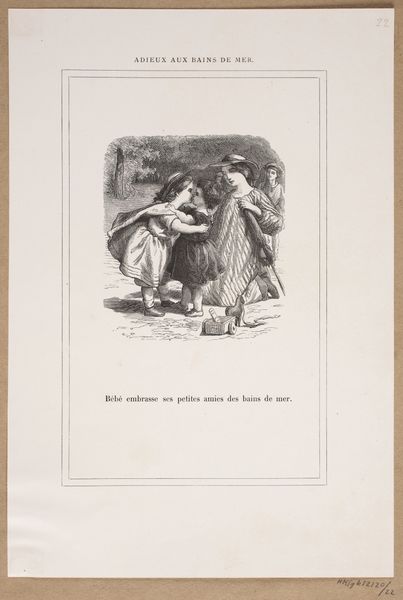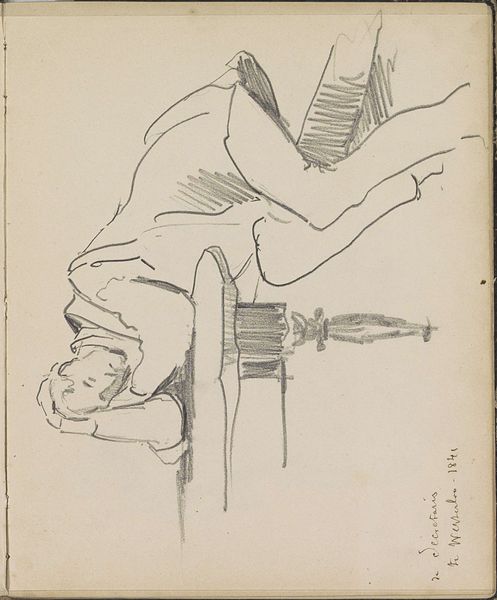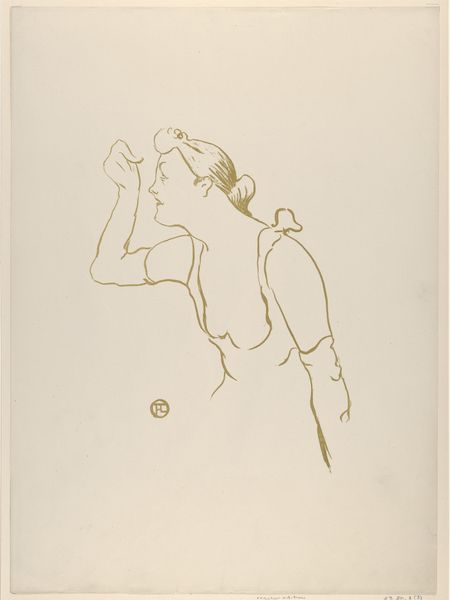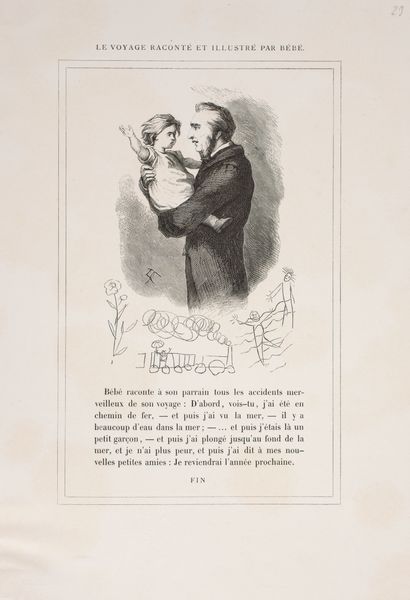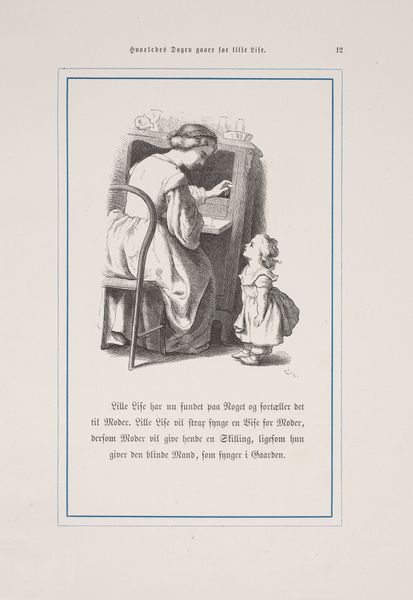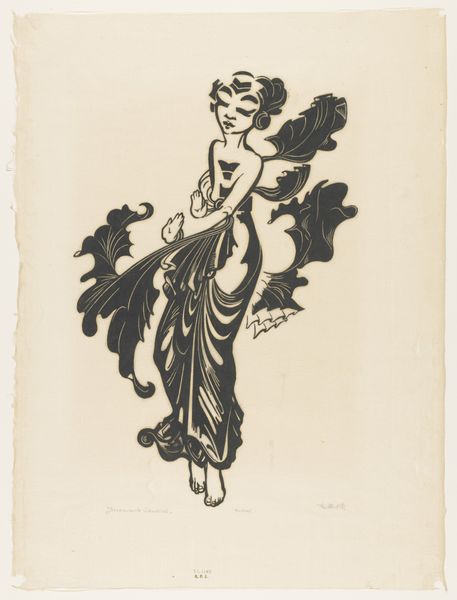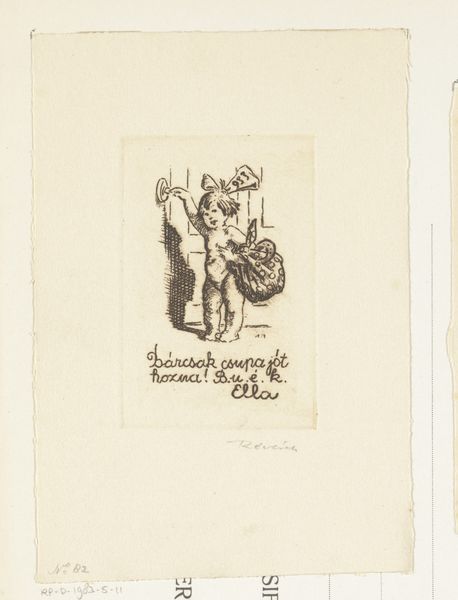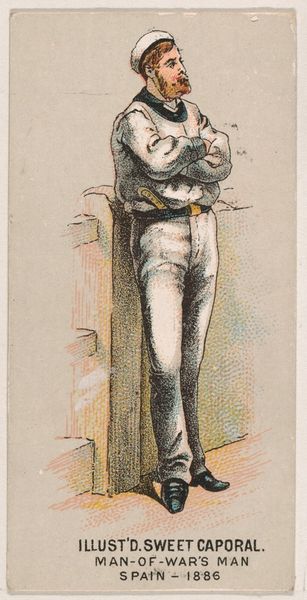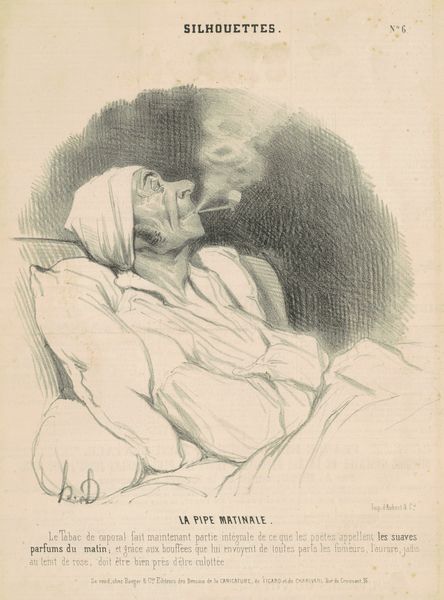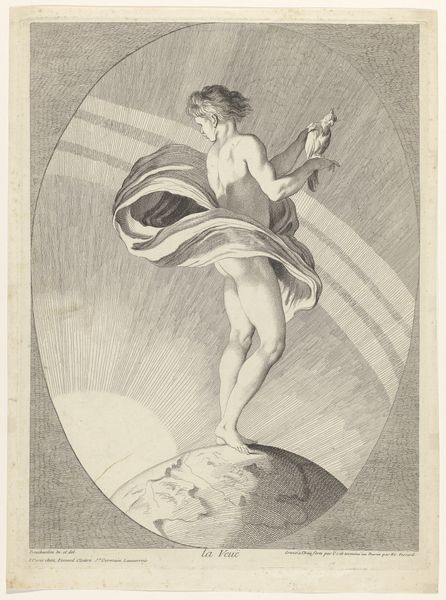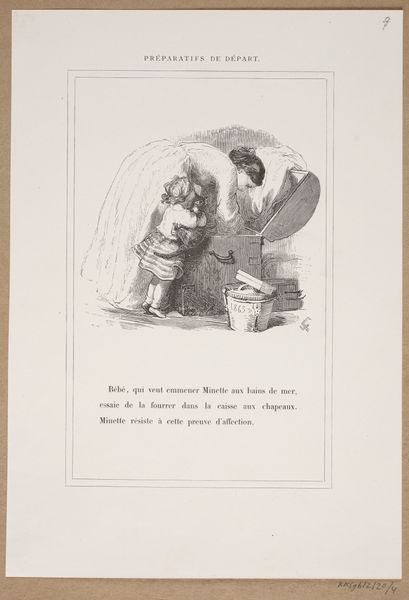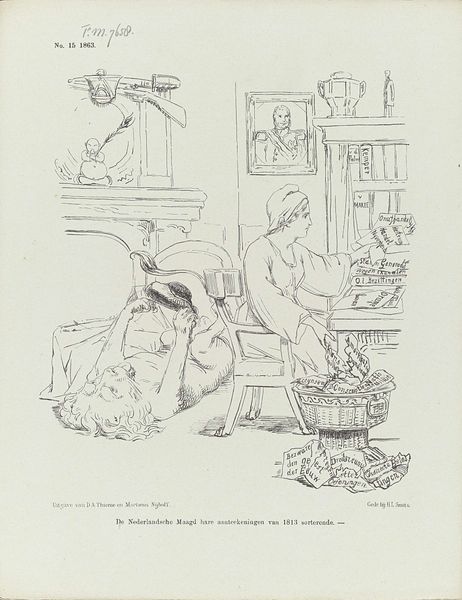
Art - Goût - Beauté, Feuillets de l' élégance féminine, Juin 1932, No. 142, 12e Année, p. 2 1932
0:00
0:00
#
comic strip sketch
#
pen illustration
#
pen sketch
#
personal sketchbook
#
ink drawing experimentation
#
pen-ink sketch
#
pen work
#
sketchbook drawing
#
storyboard and sketchbook work
#
sketchbook art
Dimensions: height 315 mm, width 240 mm
Copyright: Rijks Museum: Open Domain
Editor: Here we have a page from "Art - Goût - Beauté, Feuillets de l'élégance féminine, Juin 1932" by H. Rouit. It's a pen illustration depicting a woman smoking, draped in fabric. The overall mood is sensual and sophisticated, but the sketch-like quality feels a little…unfinished? What do you see in this piece? Curator: I see a powerful snapshot of shifting female identities in the interwar period. The very title of the magazine points to an intentional elevation of the feminine as an art form. This image, and the magazine, speak to a growing cultural appetite for female agency and visibility, wouldn’t you say? Editor: Definitely. She seems aware of being watched. Curator: Precisely. How does the artist's choice of making this an advertisement challenge or reinforce ideas around consumerism and the female body? The woman’s nudity is tempered by her elegance and the product being advertised – Rigaud perfume. Does this make her complicit, or is she taking ownership of her sexuality within the limited frameworks available? Editor: It’s complicated, isn’t it? It feels very much like both at the same time. I hadn't thought about it in terms of female agency. Curator: Exactly. And look at the publication date: 1932. The Depression is in full swing, yet here’s an advertisement for luxury perfume. This juxtaposition prompts questions about escapism, consumer culture, and the targeted audience: Who could afford such extravagance? How did it intersect with the social realities of the time? Editor: That’s a really important point about the historical context. I learned a lot about seeing the conflicting narratives embedded in the image. Curator: Indeed! Art often acts as a mirror, reflecting and refracting the complexities of its time. Analyzing it through that lens helps to appreciate those social dialogues.
Comments
No comments
Be the first to comment and join the conversation on the ultimate creative platform.
